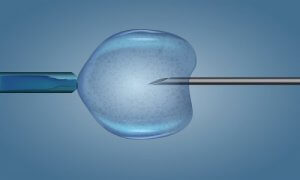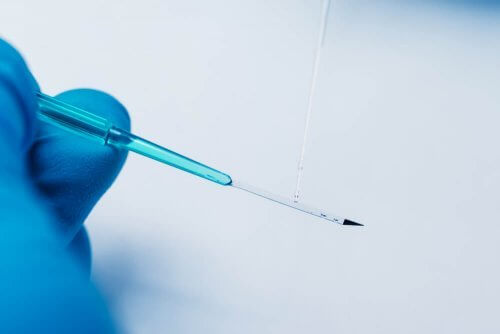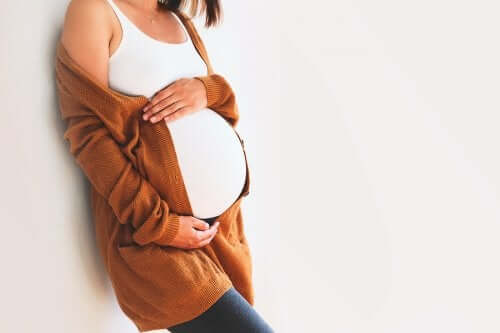Egg Donation: Everything You Need to Know

Egg donation is a reproductive technique that involves in vitro fertilization and is a possible solution for women with certain fertility issues. It allows them to conceive through the donation of healthy eggs from other women. It can involve sperm from a woman’s partner or sperm from a donor.
In vitro fertilization, when it comes to egg donation, consists of joining a donated egg with sperm from a woman’s partner or a donor. This fertilization takes place outside of the woman’s body and the resulting embryos incubate between 3 and 6 days.
Later, a specialist chooses the embryos with the highest chances of implantation in order to transfer them to the woman.
What does the process involve for the egg donor?
Potential donors must meet certain recommendations. However, only a specialist can determine which characteristics are fundamental.
- Donors should be between 20 and 30 years old (approximately) and in good physical and mental health. They should not be carriers of any genetic or sexually transmitted diseases, nor should they be adopted. This is because adopted woman don’t have access to their biological parents’ medical history.
- Women who wish to donate eggs must go through tests to verify that they meet the requirements. In doing so, they guarantee their good health and chances for successful treatment. These studies evaluate family history as well as personal habits.
- Donor database. If the results from the tests and evaluations are favorable, then the donor will be added to the donor database until a compatible receiver with her physical characteristics appears.
- Choosing a donor. When choosing a donor, the goal is for the physical characteristics of the donor and the receiver coincide.
- Follicular aspiration (EUFA). After ovulation, in order to extract the eggs, doctors perform an outpatient procedure involving intravenous sedation. Entering through the vagina, doctors make a puncture in order to extract the follicles (that make up part of the ovary) and the oocytes (that come from the ovary).
- Ovarian stimulation. Over a period of two weeks, the donor receives subcutaneous hormone injections. At the same time, doctors perform ultrasounds and blood analysis to monitor the donor.

What does the donation process involve for the receiving patient
Receiving patients must also meet a series of requirements. Just as in the case with donors, only a specialist can determine whether a woman is a viable candidate.
- Receiving patients should be between 35 and 45 years old.
- Characteristics that often bring women to opt for this procedure include the following: Ovaries in poor condition or that function poorly, a lack of oocytes, women who have experienced premature menopause.
- Preliminary testing: Doctors will first evaluate a woman’s physical condition and rule out any illnesses or conditions that may put her or the baby’s life at risk.
- Preparation of the uterus for the retrieval of embryos: Doctors will proceed to administer hormonal medication and monitor patients through ultrasounds and blood analysis. The purpose is to prepare the patient’s endometrium (the membrane covering the uterine cavity) for the transfer of the embryos.
- Transfer of the embryos: This can take place in one of two ways. The first is a fresh transfer, where doctors can transfer the embryos immediately (the donor and don’t necessarily have to meet). Or, doctors can perform a frozen transfer, retrieving the eggs from the donor and freezing them. Later, when the receiving patient decides to begin the process, the doctor will perform the transfer.
- Two-week wait: This is the wait time after the transfer of the embryos. It can last from 12 to 14 days.
“In vitro fertilization, when it comes to egg donation, consists of joining a donated egg with sperm from a woman’s partner or a donor. This fertilization takes place outside of the woman’s body.”
When can egg donation be considered as an option?
As women advance in age, their chances of becoming pregnant with their own eggs decreases. This is due to the fact that their ovarian reserves start to deplete and their quality becomes lower. In other words, with the passing of time, women become less and less fertile.
Therefore, the average time period where women can be receivers of egg donations is between 35 and 45 years of age. Age 50 is the maximum limit. This reproduction offers older women an excellent opportunity to become mothers when they don’t possess optimal eggs to do so.

Why is there an age limit for the receiving patient’s age?
There is no law that establishes a maximum age limit. However, the American Society for Reproductive Medicine (ASRM) states that women over the age of 50 should undergo medical evaluation before receiving eggs.
Furthermore, the ASRM states that doctors should discourage women over the age of 55 from undergoing this procedure. These recommendations are related to the heightened risks involved in becoming pregnant at this age. For example, gestational diabetes, high blood pressure and premature birth.
Egg donation is a reproductive technique that involves in vitro fertilization and is a possible solution for women with certain fertility issues. It allows them to conceive through the donation of healthy eggs from other women. It can involve sperm from a woman’s partner or sperm from a donor.
In vitro fertilization, when it comes to egg donation, consists of joining a donated egg with sperm from a woman’s partner or a donor. This fertilization takes place outside of the woman’s body and the resulting embryos incubate between 3 and 6 days.
Later, a specialist chooses the embryos with the highest chances of implantation in order to transfer them to the woman.
What does the process involve for the egg donor?
Potential donors must meet certain recommendations. However, only a specialist can determine which characteristics are fundamental.
- Donors should be between 20 and 30 years old (approximately) and in good physical and mental health. They should not be carriers of any genetic or sexually transmitted diseases, nor should they be adopted. This is because adopted woman don’t have access to their biological parents’ medical history.
- Women who wish to donate eggs must go through tests to verify that they meet the requirements. In doing so, they guarantee their good health and chances for successful treatment. These studies evaluate family history as well as personal habits.
- Donor database. If the results from the tests and evaluations are favorable, then the donor will be added to the donor database until a compatible receiver with her physical characteristics appears.
- Choosing a donor. When choosing a donor, the goal is for the physical characteristics of the donor and the receiver coincide.
- Follicular aspiration (EUFA). After ovulation, in order to extract the eggs, doctors perform an outpatient procedure involving intravenous sedation. Entering through the vagina, doctors make a puncture in order to extract the follicles (that make up part of the ovary) and the oocytes (that come from the ovary).
- Ovarian stimulation. Over a period of two weeks, the donor receives subcutaneous hormone injections. At the same time, doctors perform ultrasounds and blood analysis to monitor the donor.

What does the donation process involve for the receiving patient
Receiving patients must also meet a series of requirements. Just as in the case with donors, only a specialist can determine whether a woman is a viable candidate.
- Receiving patients should be between 35 and 45 years old.
- Characteristics that often bring women to opt for this procedure include the following: Ovaries in poor condition or that function poorly, a lack of oocytes, women who have experienced premature menopause.
- Preliminary testing: Doctors will first evaluate a woman’s physical condition and rule out any illnesses or conditions that may put her or the baby’s life at risk.
- Preparation of the uterus for the retrieval of embryos: Doctors will proceed to administer hormonal medication and monitor patients through ultrasounds and blood analysis. The purpose is to prepare the patient’s endometrium (the membrane covering the uterine cavity) for the transfer of the embryos.
- Transfer of the embryos: This can take place in one of two ways. The first is a fresh transfer, where doctors can transfer the embryos immediately (the donor and don’t necessarily have to meet). Or, doctors can perform a frozen transfer, retrieving the eggs from the donor and freezing them. Later, when the receiving patient decides to begin the process, the doctor will perform the transfer.
- Two-week wait: This is the wait time after the transfer of the embryos. It can last from 12 to 14 days.
“In vitro fertilization, when it comes to egg donation, consists of joining a donated egg with sperm from a woman’s partner or a donor. This fertilization takes place outside of the woman’s body.”
When can egg donation be considered as an option?
As women advance in age, their chances of becoming pregnant with their own eggs decreases. This is due to the fact that their ovarian reserves start to deplete and their quality becomes lower. In other words, with the passing of time, women become less and less fertile.
Therefore, the average time period where women can be receivers of egg donations is between 35 and 45 years of age. Age 50 is the maximum limit. This reproduction offers older women an excellent opportunity to become mothers when they don’t possess optimal eggs to do so.

Why is there an age limit for the receiving patient’s age?
There is no law that establishes a maximum age limit. However, the American Society for Reproductive Medicine (ASRM) states that women over the age of 50 should undergo medical evaluation before receiving eggs.
Furthermore, the ASRM states that doctors should discourage women over the age of 55 from undergoing this procedure. These recommendations are related to the heightened risks involved in becoming pregnant at this age. For example, gestational diabetes, high blood pressure and premature birth.
All cited sources were thoroughly reviewed by our team to ensure their quality, reliability, currency, and validity. The bibliography of this article was considered reliable and of academic or scientific accuracy.
- González Pla, F., Cambra Badii, I. A., Giambo, L., Mastandrea, P. B., Paragis, M. P., Tomas Maier, A., … & Michel Fariña, J. J. (2017). Ovodonación y subjetividad: aportes clínicos a partir de un estudio teórico empírico. https://ri.conicet.gov.ar/handle/11336/49954
- Hilario, R., Dueñas, J., Santos, R. D. L., Garcia, J., & Velarde, L. (2015). Mujer con falla ovárica prematura a los 15 años de edad, logra embarazo con ovodonación. Revista Peruana de Ginecología y Obstetricia, 61(2), 151-156. http://www.scielo.org.pe/scielo.php?script=sci_arttext&pid=S2304-51322015000200009
- Lumbreras, M., Lluesma, S. M., Rodriguez, B., Conti, M. S., & Hurst, S. Infertilité, FIV, Ovodonation: parcours d’une vie.
This text is provided for informational purposes only and does not replace consultation with a professional. If in doubt, consult your specialist.








